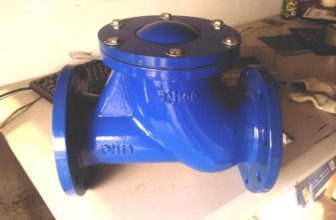[ad_1]
1. The working principle of the oxygen pressure reducing valve
The appearance and working principle of the oxygen pressure reducing valve.
The high-pressure chamber of the oxygen pressure reducing valve is connected to the steel cylinder, and the low-pressure chamber is the gas outlet and leads to the use system. The indicated value of the high pressure gauge is the pressure of the gas stored in the cylinder. The outlet pressure of the low pressure gauge can be controlled by the adjusting screw.
When in use, first open the main switch of the steel cylinder, and then turn the pressure adjustment screw of the low pressure gauge clockwise to compress the main spring and drive the diaphragm, spring pad and ejector rod to open the valve. In this way, the imported high-pressure gas enters the low-pressure chamber after being throttled and decompressed from the high-pressure chamber, and leads to the working system through the outlet. Turn the adjusting screw to change the opening height of the valve, so as to adjust the passage of high-pressure gas and achieve the required pressure value.
Pressure reducing valves are equipped with safety valves. It is a device to protect the pressure reducing valve and make it safe to use, and it is also a signal device for the failure of the pressure reducing valve. If the outlet pressure rises by itself and exceeds a certain allowable value due to valve pad, valve damage or other reasons, the safety valve will automatically open to exhaust.
2. How to use the oxygen pressure reducing valve
(1) According to the different requirements of use, there are many specifications for oxygen pressure reducing valves. The higher inlet pressure is mostly , and the lower inlet pressure is not less than 2.5 times of the outlet pressure. There are many outlet pressure specifications, generally , and the highest outlet pressure is .
(2) When installing the pressure reducing valve, it should be determined whether its connection specifications are consistent with the joints of the cylinder and the system used. The pressure reducing valve and the steel cylinder are connected by a hemispherical surface, and the two are completely matched by tightening the nut. Therefore, when in use, the two hemispherical surfaces should be kept clean to ensure a good airtight effect. Dust can be blown off with high-pressure gas before installation. Materials such as polytetrafluoroethylene can also be used as gaskets if necessary.
(3) The oxygen pressure reducing valve should be strictly prohibited from contacting grease to avoid fire accidents.
(4) When stopping work, the remaining air in the pressure reducing valve should be released, and then the adjusting screw should be loosened to prevent the elastic element from being deformed under pressure for a long time.
(5) The pressure reducing valve should avoid impact and vibration, and should not be in contact with corrosive substances.
3. Other gas pressure reducing valves
For some gases, such as nitrogen, air, argon and other permanent gases, an oxygen pressure reducing valve can be used. But there are also some gases, such as corrosive gases such as ammonia, which require a special pressure reducing valve. There are special pressure reducing valves for nitrogen, air, hydrogen, ammonia, acetylene, propane, water vapor and so on.
The use methods and precautions of these pressure reducing valves are basically the same as those of oxygen pressure reducing valves. However, it should also be pointed out that special pressure reducing valves are generally not used for other gases. In order to prevent misuse, special connection ports are used between some special pressure reducing valves and steel cylinders. For example, both hydrogen and propane use left thread, also known as reverse thread, special attention should be paid to installation.
[ad_2]




